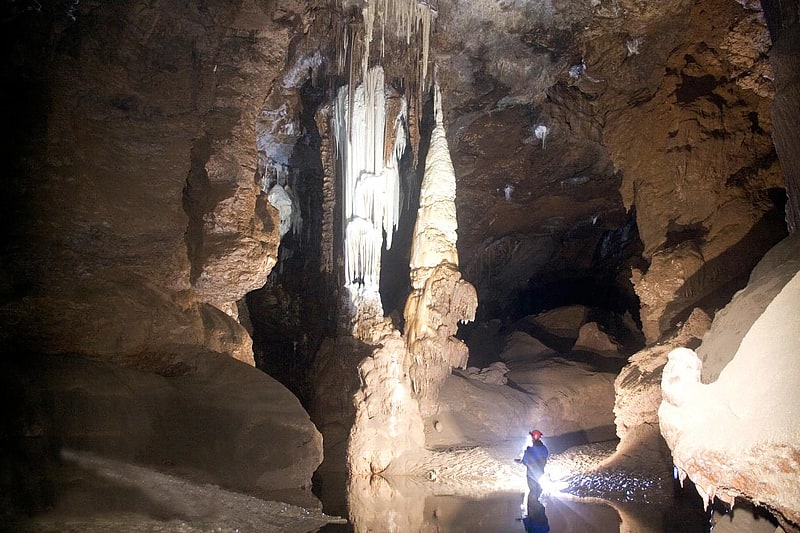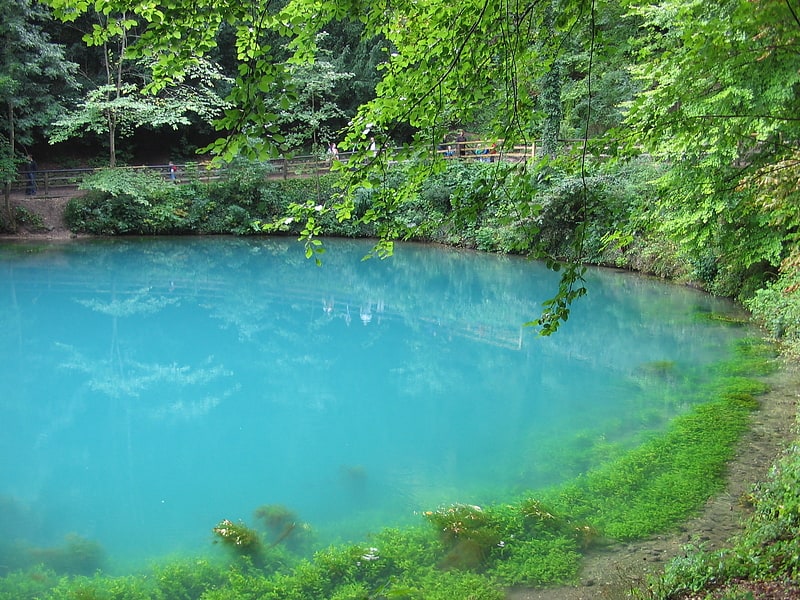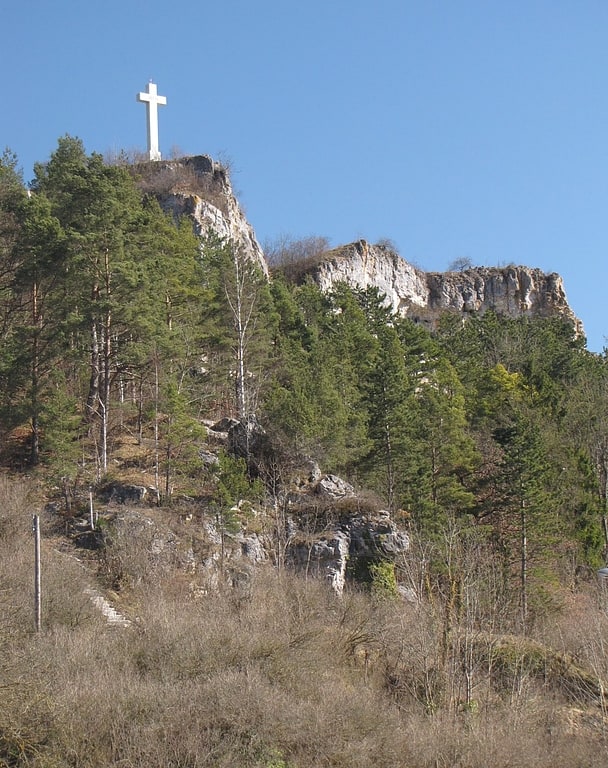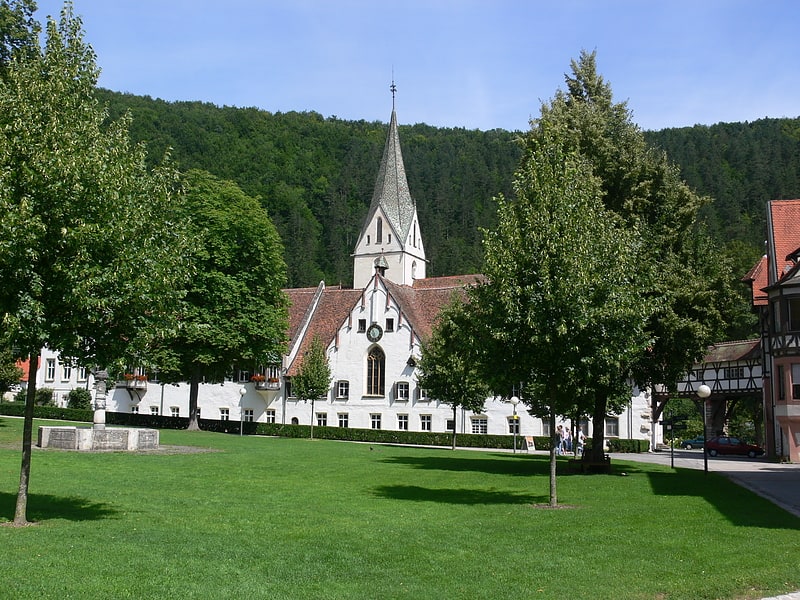Discover 6 hidden attractions, cool sights, and unusual things to do in Blaubeuren (Germany). Don't miss out on these must-see attractions: Blautopf, Küssende Sau, and Brillenhöhle. Also, be sure to include Blautopf in your itinerary.
Below, you can find the list of the most amazing places you should visit in Blaubeuren (Baden-Württemberg).
Table of Contents
Blautopf

The Blauhöhle is the largest cave system in the Swabian Alps in southern Germany. The Blauhöhle presumably originated in a time when the Danube still flowed through the Blau valley. Since the shifting of the Danube, several small rivers, the Schmiech, the Ach, and the Blau, have flowed through this valley. The cave system begins about 21 meters under water at the base of the Blautopf. It continues west and northwest, rising and falling several times until after a horizontal distance of about 1,200 metres it comes above the level of ground water and opens into the second big air-filled chamber. The maximum depth of the cave under water is 42 metres.
This chamber was first discovered in 1985 by Jochen Hasenmayer, who named it Mörikedom (Mörike Cathedral, named after Eduard Mörike). Hasenmayer's diving accident in the Wolfgangsee resulted in a long break in its exploration. For several years the cave has been explored by the Arbeitsgemeinschaft Blautopf (Blautopf Study Group, or Consortium), a team of cave divers from several different regional groups. This group has made progress exploring the cave, including making exact measurements of the way to the Mörikedom. The improvement of underwater breathing technology, especially the rebreather, has allowed for longer dives carrying less weight. The discovery of the Wolkenschloss (Castle of Clouds), another large, air-filled cavern, and the so-called Landweg (land-way), a long, open cave river behind the Mörikedom, were great successes for the Arbeitsgemeinschaft.
Hasenmayer continued his attempts to explore the cave system in his cave submarine, Speleonaut.
Since 2002 the Arbeitsgemeinschaft Höhle und Karst Grabenstetten (Cave and Karst Consortium of Grabenstetten), as a part of their work on a neighboring cave system, the Vetterhöhle, have attempted to dig a dry entrance into the Blauhöhle. In 2006 several large caverns were discovered in the Vetterhöhle, and in the autumn a connection was discovered between the Vetterhöhle and the Wolkenschloss.
Also in the autumn of 2006, the Arbeitsgemeinschaft Blautopf discovered an enormous cavern at the end of the Landweg, measuring 170 m (560 ft) long by 50 m (160 ft) wide by 50 m high, which was named Apokalypse. The groups are now also working with yet another Arbeitsgemeinschaft on a sinkhole north of Blaubeuren, which is believed to be connected with the Blauhöhle behind the Apokalypse.[1]
Address: Blautopfstr. 9, 89143 Blaubeuren
Küssende Sau

Climbing, Mountain
Brillenhöhle

Tourist attraction in Blaubeuren, Germany. The Brillenhöhle is a cave ruin, located 16 km west of Ulm on the Swabian Alb in south-western Germany, where archaeological excavations have documented human habitation since as early as 30,000 years ago. Excavated by Gustav Riek from 1955 to 1963, the cave's Upper Paleolithic layers contain a sequence of Aurignacian, Gravettian and Magdalenian artifacts. In 1956 the first human fossils were discovered within a fireplace in the center of the cave, a discovery which made important contributions to the foundational understanding of the Magdalenian culture of central Europe.[2]
Blautopf

Spring in Germany. The Blautopf is a spring that serves as the source of the river Blau in the karst landscape on the Swabian Jura's southern edge. It is located in Blaubeuren, Alb-Donau-Kreis, Baden-Württemberg, Germany.[3]
Ruckenkreuz

Also known as: Blaubeuren#Kultur und Sehenswürdigkeiten
Observation deck in Blaubeuren, Germany. The Ruckenkreuz is an 8.4 metre tall, 2.80 metre wide memorial cross of reinforced concrete. It stands on a rocky mountain at Blaubeuren, Baden-Württemberg, Germany, in memory of the inhabitants of Blaubeuren killed in World War I. The Ruckenkreuz was completed on November 21, 1926.
Geographical coordinates: 48°24′38″N 9°47′30″E[4]
Kloster

Also known as: Blaubeuren
Abbey. Blaubeuren Abbey was a house of the Benedictine Order located in Blaubeuren, Baden-Württemberg, Germany.[5]
Address: Klosterhof 2, 89143 Blaubeuren